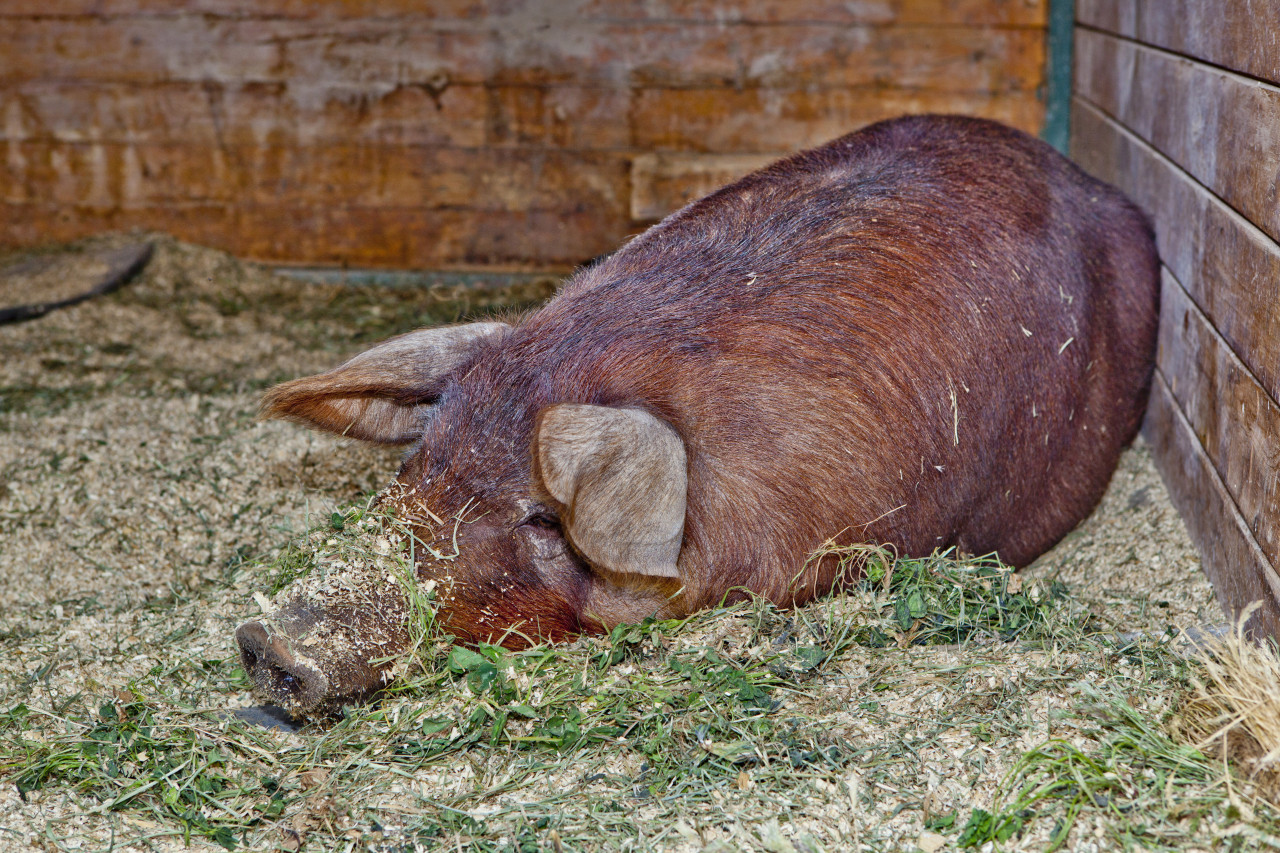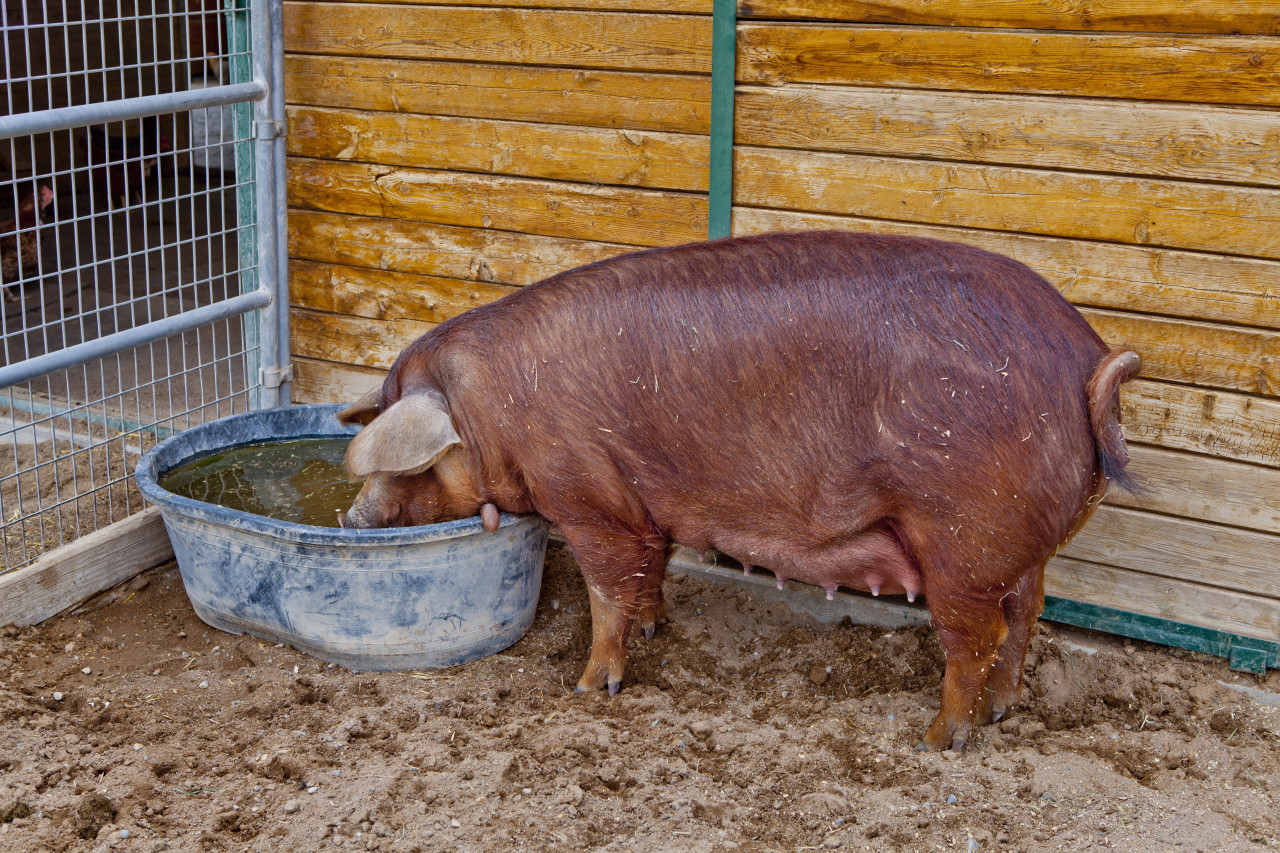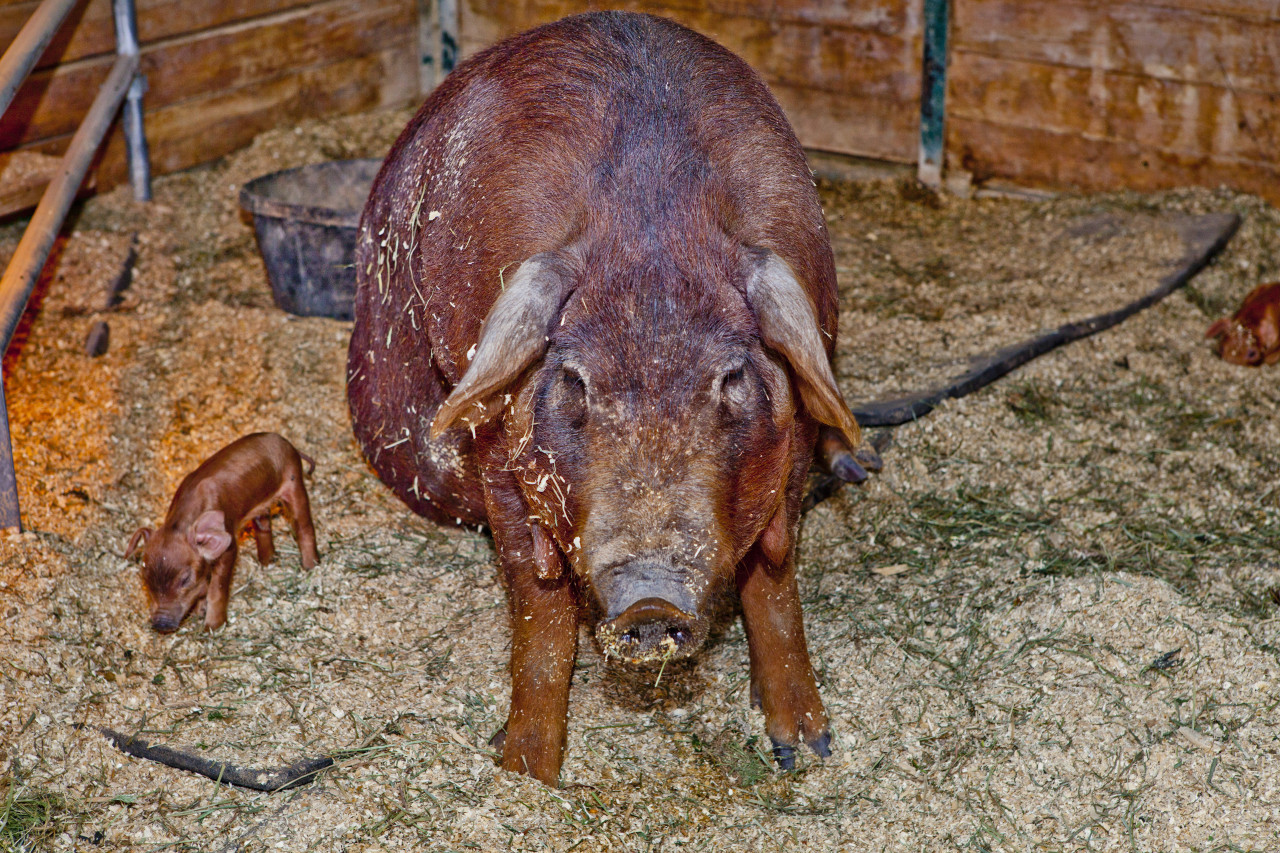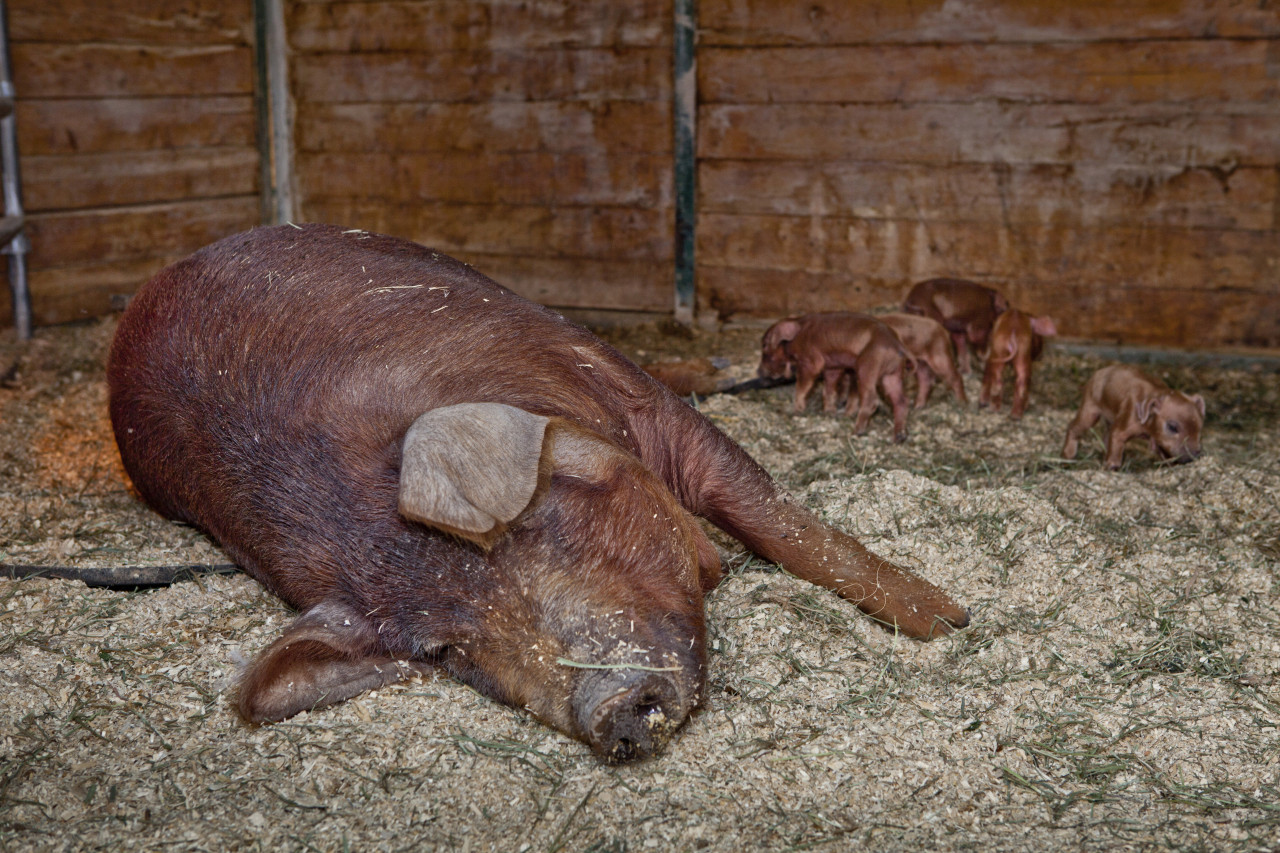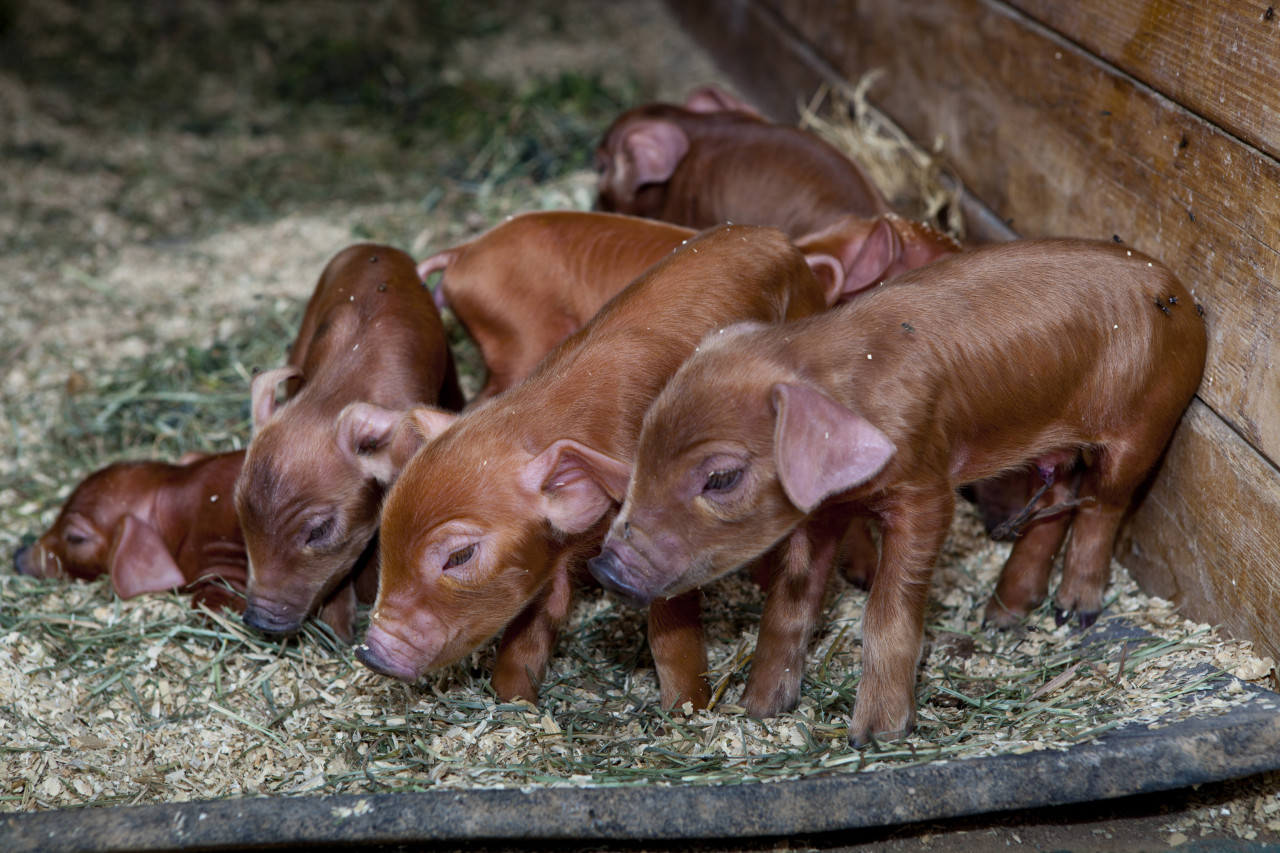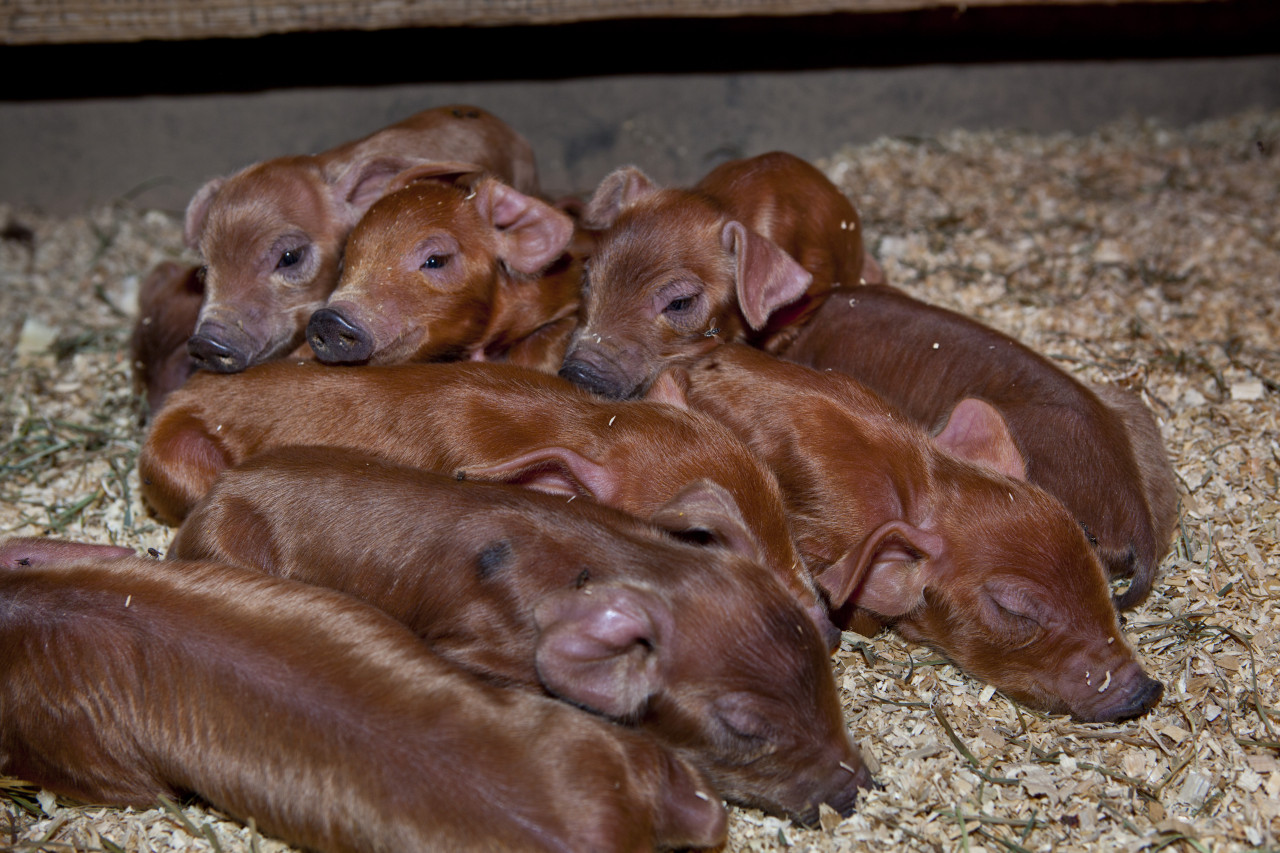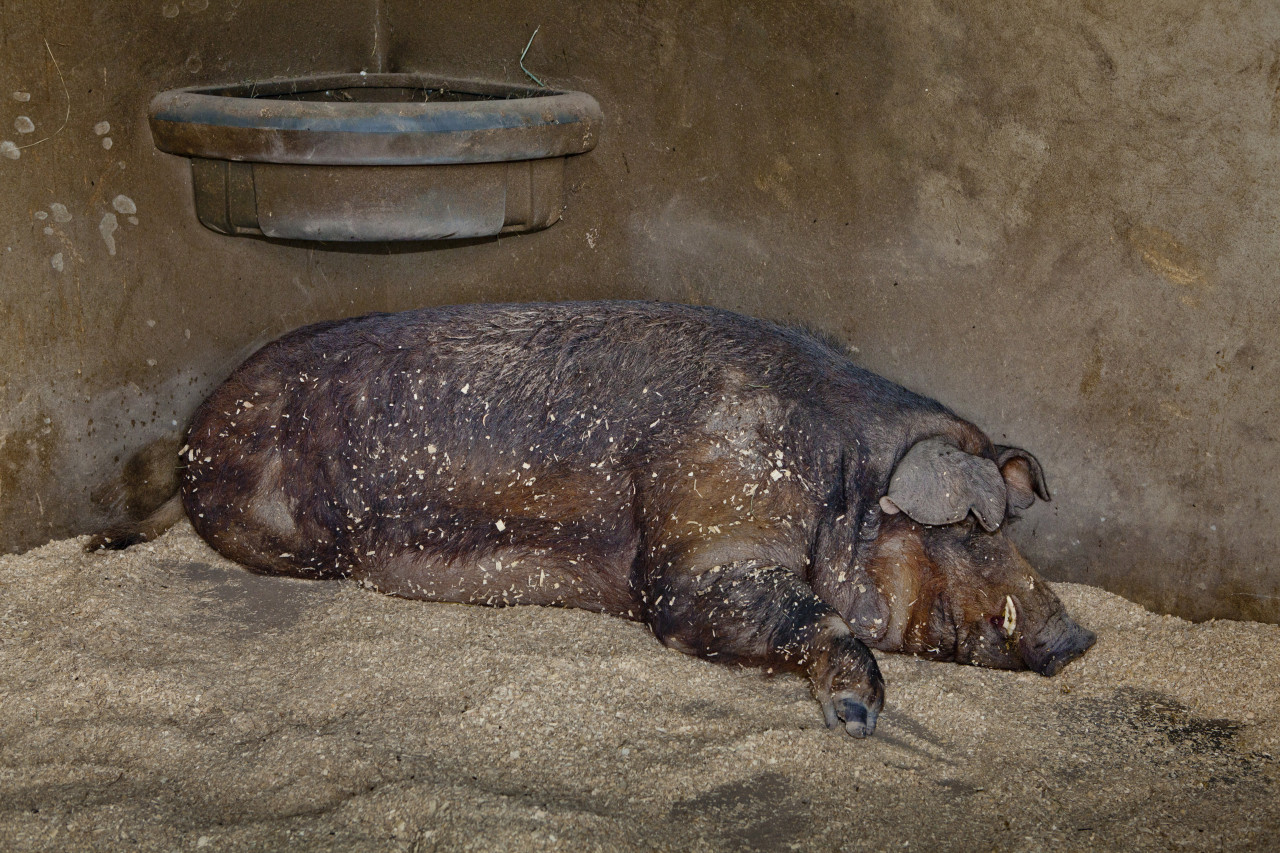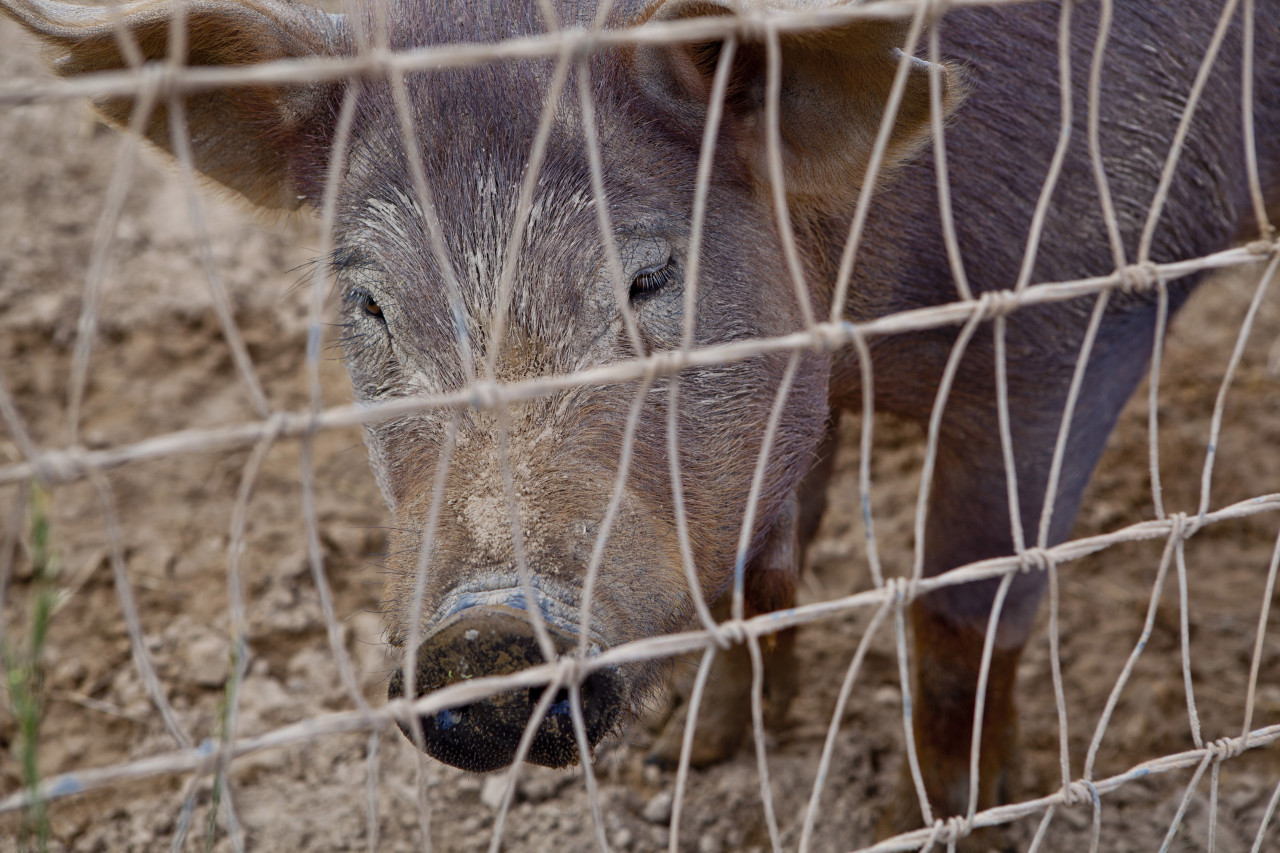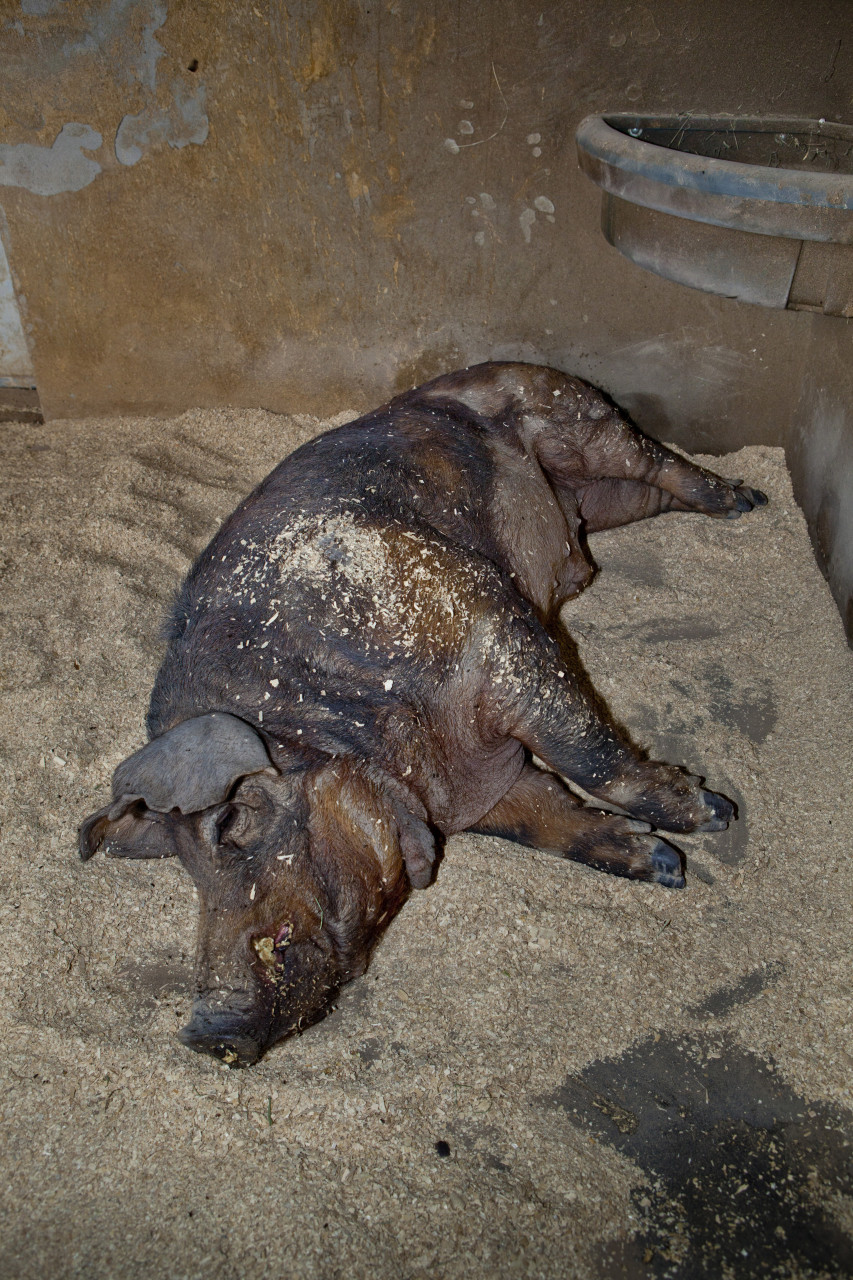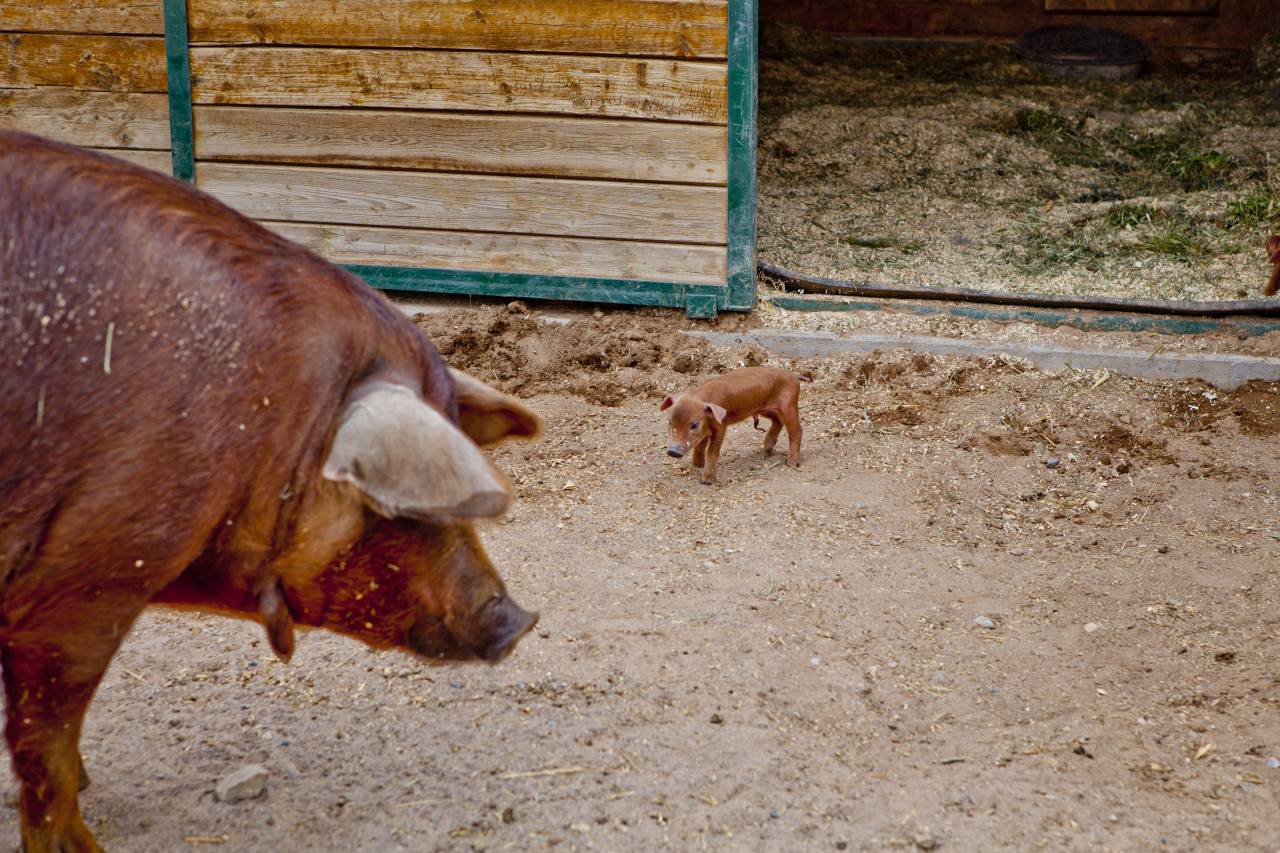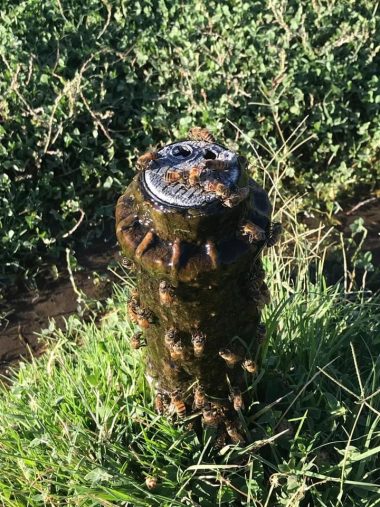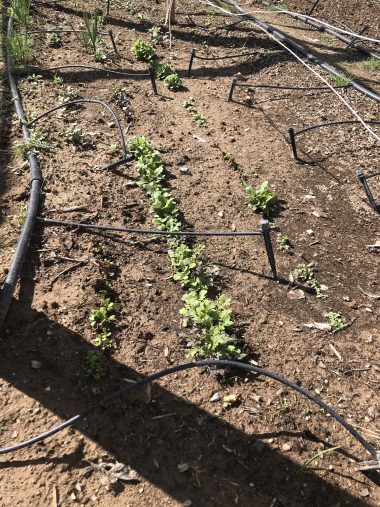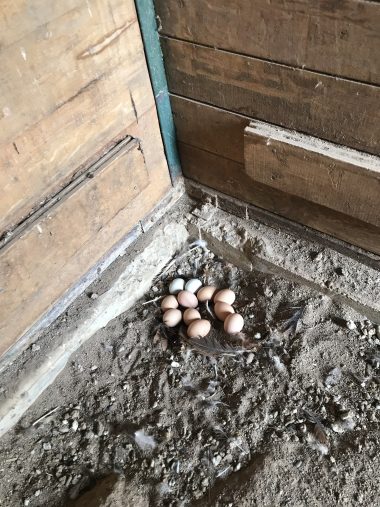Red Wattle Pigs
June 10, 2015
The Red Wattle is a large, red hog with a fleshy wattle attached to each side of the neck. The wattles have no known function. They are a single gene characteristic and usually pass to crossbred offspring. The Red Wattle comes in a variety of shades of red, some with black specks or patches, and red and black hair. Some individuals are nearly black. The head and jowl are clean and lean, the nose is slim, and ears are upright with drooping tips. The body is short coupled and the back slightly arched. Mature animals weigh 600-800 pounds, but may weigh as much as 1200 pounds and measure up to four feet high and eight feet long.
Red Wattle hogs are known for their hardiness, foraging activity, and rapid growth rate. The sows are excellent mothers, who labor litters of 9-10 piglets, and provide good quantities of milk for their large litters. They adapt well to a wide range of climates, making them a good choice for consideration in outdoor or pasture-based swine production.
Red Wattle pork is exceptionally lean and juicy with a rich beef-like taste and texture.
But where did the wattled hogs come from originally? This is a mystery. One theory holds that they are of European origin, arriving with the French in Louisiana and migrating west with settlers to Texas. The French know good pork when they taste it so of course they brought their prized hogs with them.
Unfortunately, as settlers moved west, the breed began to fall out of favor because settlers came into contact with breeds that boasted a higher fat content, which was important for lard and soap. Red Wattles were left to roam the hills of eastern Texas, where they were hunted to near extinction, until Mr. H.C. Wengler came across a herd in the dense forest and began breeding them into what they are today. Five year later, in a similar incident, Robert Prentice located another herd of Red Wattle hogs, which became known as the Timberline herd, after its wooded origins in eastern Texas.
The Red Wattle hog is listed on the ALBC Conservation Priority List as being critically endangered meaning there are fewer than 200 annual registrations in the U.S. and estimated to have fewer than 2,000 individuals of this breed globally.

